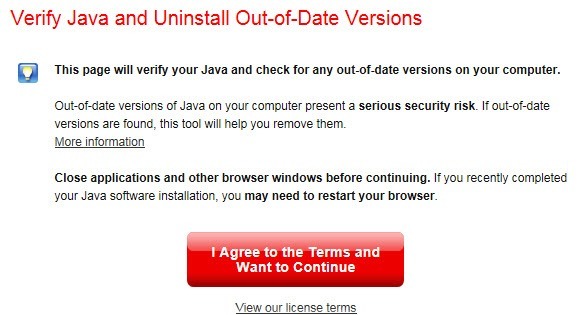Remove Old Java Versions Tool
JavaRa is a small application for Microsoft Windows that serves two purposes. The first is to check if a Java update is available and if that is the case download and install it on the computer. Best free psx emulator android. The second scans the system for previous versions of Java, if any old versions are found on the system they are removed from it. This second option is very handy because Java, more precisely its Java Runtime Environment, tends to install itself in separate directories with each new version that is released.
Click the Add/Remove Programs control panel icon The Add/Remove control panel displays a list of software on your system, including any Java software products that are on your computer. Select any that you want to uninstall by clicking on it, and then click the Remove button. If left unattended, Java can spread like wildfire in an enterprise. When I ran a report to find out what the Java landscape looked like in my environment, I found 62 different versions Java! This was from years of users clicking Yes to auto-update prompts, websites forcing Java and, however, else it got spread. I'm still in the planning stages of this massive cleanup and upgrade effort.
Four different versions of the Java Runtime Environment were installed on my system and JavaRa removed the three versions of JRE that were the oldest from the system. I started by scanning my system for old versions of Java which were removed, then checked if there was a Java update available. I should have done it the other way round because an update was found and a new version of Java was installed on my system.
- May 13, 2014 If all goes well with the uninstall of Java 5/6 (or whatever you enter in the text file), you should have the latest version of Java 7 Update 55 in add and remove programs! Wrapping Up: In this post, we went over the process of superseding all versions a Java 6/5 runtime with Java 7 Update 55.
- To uninstall Java, first remove the older versions like shown above and then go to Control Panel and Programs and Features. Click on the latest Java version listed there and click on Uninstall. Technically, this is all you should have to do, but if you really want to get rid of every trace of Java, I recommend using a freeware app called JavaRa. Once you download it, just run the application.
- One of the problems with Java is that, at least in the past, installing a new update didn’t always (n fact, never did) uninstall the older version. This meant that, despite installing the “latest and greatest” version, the security exposures still remained. It’s been the recommendation of myself and any others I know that you should always remove.
- Re: Removing previous versions of Java: How TO? Kellytice May 5, 2017 11:35 AM (in response to mcrossland) Find a machine that has the specific version you wish to uninstall. In Patch Manager, select and right-click that machine, then launch Computer Explorer and go to the Installed Software tab.

Which led to the fact that the previously newest version was not the newest anymore so I had to run the cleanup process again to remove that version. The best way to use the application is therefor to run the Update first and check for old versions once the software has checked for and installed possible updates.
Update: The JavaRa homepage has moved to a new domain. You can now download the latest version of the Java deployment, update and removal tool from there.
The program displays four options on start up. Search for updates will look for Java updates using jucheck.exe that is distributed with every Java installation, or check on Oracle's website for updates.
Remove Older Versions on the other hand will remove all outdated Java versions from the operating system to make the system more secure and avoid version conflicts.
Remove Old Java Versions Tool Box
